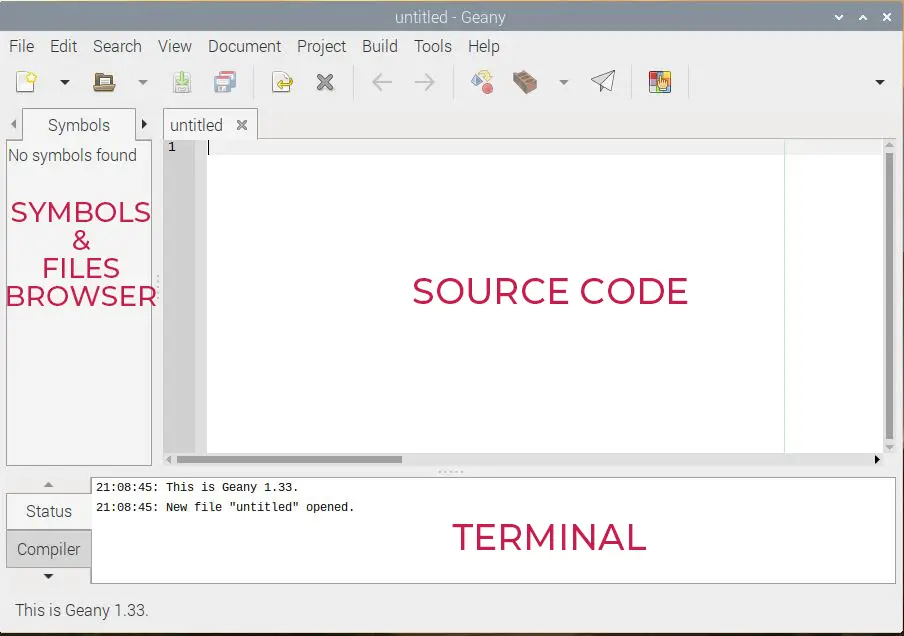
Then in Geany select : Tools/Plugin Manager/Geany GDB ( NOT Debugger) Also the compiler switch '-g' needs to be present to produce the debug version of the executable. However, if you fancy a comprehensive experience, you need an IDE. Thanks all for the tips I have had quite good success using: Code: Select all. Maksymilian Belter jest z zawodu architektem systemów informatycznych, a z zamiowania i wyksztacenia.
#Raspberry pi geany install
If you prefer text editors, you can install your favorite editor and start coding right away. Dziki moliwociom oferowanym przez Raspberry Pi Pico wystarczy, e podczymy wywietlacz do mikrokontrolera, mikrokontroler do komputera, wczymy kompilator i: printf (Hello, World), a wiat staje przed nami otworem.

libpolkit-agent- libpolkit-backend- libpolkit-gobject- libsdl1.2debian libsmbclient libssl1.0.2 libssl1. It features Python and Scratch as its main programming languages, both of which come pre-installed on the system.Īdditionally, there is also support for other programming languages so you can write programs or scripts in your preferred programming language.īut, to create applications/programs on the Raspberry Pi, you need an environment where you can write and test out your code. You can open Geany up by click on the Raspberry Pi logo in the top-left, and selecting Programming > Geany. base-files geany geany-common gtk2-engines-clearlookspix libarchive13 libbasicusageenvironment1 libgroupsock8 libgs9 libgs9-common liblivemedia57 libobrender32v5 libobt2v5 libpam-systemd libperl5. This is a Debian-based 32-bit Linux distribution developed by the Raspberry Pi Foundation. Each of the three - IDLE, Geany and Thonny - seem to offer a similar set of functions, but all seem to be geared. I'd like to take a look at each of them and offer a comparison. Raspberry Pi runs on its own operating system called Raspberry Pi OS (formerly Raspbian). The Raspberry Pi (specifically, Raspbian with desktop) comes with a few integrated development environments (IDEs) for writing, running and debugging Python scripts. It's this democratization of Pi that ultimately laid its foundation as a device that's now widely used by many to learn about concepts of computers, electronics, and other hardware verticals.


 0 kommentar(er)
0 kommentar(er)
